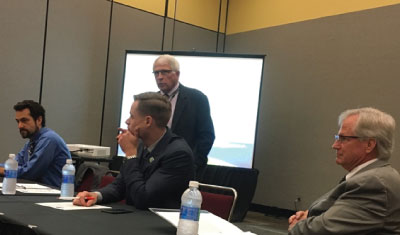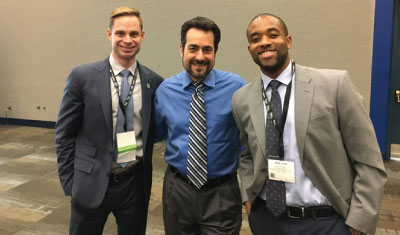
Every year, increasingly extreme weather events — like hurricanes, wildfires, earthquakes, and floods — wreak havoc on homes, businesses, municipalities and the environment. From 1980-2015, the US averaged 5.2 weather events per year with damages exceeding $1 billion; in the last 5 years (2011–2015) the annual average has more than doubled to 10.8 events. Additionally, the increased frequency of these events is incurring a tremendous national toll. In 2015, losses due to natural disasters in the United States totaled over $16 billion.
The statistics speak for themselves: not only is the frequency of disasters increasing, but also the number of communities impacted, as well as the severity of events. It is no longer a question of if a disaster will strike, but when. Disaster recovery times for communities vary, sometimes taking months or years. In some under-served communities, the job of rebuilding is never completed. Recovery depends on a community’s level of resilience. Organizations like the United Nations and a growing number of local governments and community organizations are promoting community resilience as the best approach to managing the risk of natural disasters.

ANCR Board of Directors (left to right): Evan Reis, Warren Edwards, Bryan Soukup, and Tom Phillips, discuss strategic goals and upcoming opportunities for involvement. Mr. Phillips is from the Target Corporation, which generously provide a first round of funding for the alliance.
"America is made up of a network of interconnected and interdependent communities. As a chain is only as strong as its weakest links; America is only as strong as its weakest communities"
– Warren C. Edwards, Senior Fellow at the Community and Regional Research Institute
Community resilience is defined as a community’s capacity to withstand and recover from significant disruptions of any kind, by anticipating threats, limiting their effects, and rapidly restoring functionality after a crisis.
NRPA Joins the Alliance for National & Community Resilience
Helping communities to build this capacity was the inspiration for creating the Alliance for National and Community Resilience (ANCR). Over the past year, the International Code Council (ICC) has co-led the effort to create ANCR, a not-for-profit alliance tasked with developing the tools, processes and metrics necessary for communities to increase their resilience. Resilient communities are not only prepared to help prevent or minimize losses and damage, but they also have the ability to quickly return citizens to work, reopen businesses, and restore other essential services needed for a full and timely economic recovery.

Left to right: Bryan Soukup, Director of Resilience Initiatives, ICC; Evan Reis, Co-Founder at US Resiliency Council; and Roland Richardson, Development Officer at NRPA at the ANCR kick-off event in Kansas City.
Acknowledging the importance of cross-sector collaboration, ANCR recruited a variety of experts – emergency managers, planners and architects, and utility representatives – each focused on a unique component of community resilience. As a major first step, ANCR is creating a “Resilience Benchmark” that will identify and rate various community functions (or the services essential to the survival of a community) such as transportation, communications and business continuity.
Using the benchmark, communities will be able to:
- Better understand what resilience means in their specific community
- Determine their risk profile, which will consider and rate all of the potential risks the community faces
- Assess where they stand on a scale of resilience
- Access tools and resources to help their community become more resilient
While there are a number of similar initiatives, ANCR differs by placing a heavy emphasis on the “stickiness” of communities; in other words, what are the elements that create thriving and cohesive communities that are desirable to live in -- what inspires residents to return to a community after a major catastrophe has struck.
At NRPA, we understand the critical role that park and recreation agencies play in being the glue that creates sticky communities. Parks, from their earliest roots, help bring people together across social, economic and racial divides. They support economic development, provide safety and security, promote health and wellness, foster human development, increase cultural unity, and protect environmental resources – all of which helps to strengthen communities. As a leading provider of out-of-school time programming for youth, and development programs for adults and senior citizens, park and recreation centers have extensive experience in engaging community residents. They also provide an ideal venue for reaching large numbers of people and disseminating information on the benefits of community-wide resilience. In 2015, the top 26 most-visited city parks (which is only a fraction of the total number of parks throughout the country) reported a combined total of over 230 million visitors.
The goals of the alliance are well aligned with NRPA’s commitment to advancing parks, recreation, and environmental efforts that enhance the quality of life for all people. In partnership with our members and our new ANCR partners, NRPA envisions a future where America is made up of highly resilient communities — with educated and empowered residents — that not only rebound after a catastrophe, but come back better, stronger and more economically viable than before.
Roland Richardson is NRPA's Conservation Development Officer.

